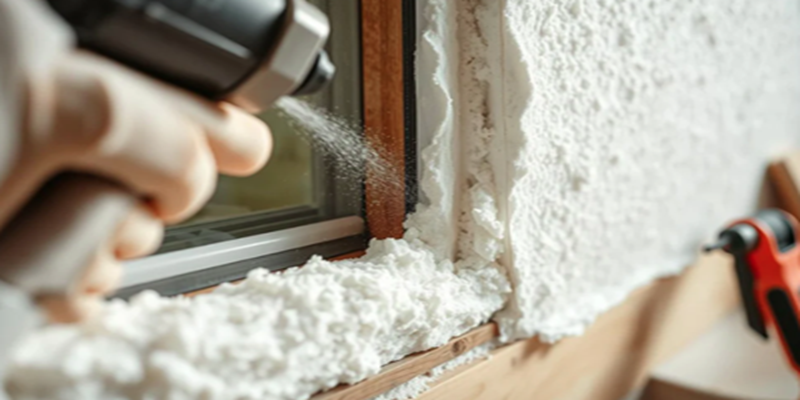Polyurethane catalyst plays an important role in the efficiency and performance of spray foam insulation materials, which can improve the thermal and sound insulation properties of spray foam. Spray foam insulation creates a strong, hermetic seal that reduces energy costs and improves indoor comfort. Polyurethane catalysts are key to achieving the chemical reactions required for foam expansion, curing, and effective adhesion. This paper explores how these catalysts work in spray foam applications and why spray foam insulation is considered better than other insulation materials.
How Polyurethane Catalysts Work in Spray Foam
In spray foam insulation, a polyurethane catalyst accelerates the reaction between the two main components: polyols and isocyanates. This reaction is what creates bubbles. When these chemicals are mixed and applied to a surface, a catalyst starts and speeds up the process, causing the mixture to rapidly expand into a thick, insulating foam. The type of catalyst used affects factors such as reaction speed, foam density and bonding properties.
Polyurethane catalysts can be roughly divided into amine catalysts and metal catalysts. For example, amine-based catalysts, such as MXC-T, MXC-C15, etc., can effectively control the expansion of foam and help improve the curing process. Metal catalysts such as tin and bismuth enhance cross-links in the foam structure, resulting in increased stability and durability, such as MXC-B20. Together, these catalysts ensure that the foam expands and cures to the desired consistency, forming a long-lasting barrier and enhancing insulation.
Why Spray Foam Insulation is Better
Spray foam insulation offers several advantages over conventional insulation materials such as fiberglass or cellulose. The following are the advantages of spraying foam insulation materials:
1. Superior Air Sealing: One of the main advantages of sprayed foam insulation material is its ability to form an air-tight seal that prevents air leakage and energy loss. This is important to reduce heating and cooling costs and to maintain a constant indoor temperature. The polyurethane catalyst enables uniform expansion, filling gaps, cracks, and hard-to-reach Spaces that other insulation materials may not be able to fill.
2. Enhanced Thermal Performance: Spray foam insulation has a high R-value, which measures thermal resistance. This means it can better resist heat transfer, offering greater insulation performance. With the help of catalysts, spray foam cures into a dense layer, providing consistent thermal protection even in extreme weather conditions.
3. Moisture Barrier: Closed-cell spray foam, a type of polyurethane foam, acts as a moisture barrier, preventing water intrusion. This helps in reducing mold growth and maintaining indoor air quality. Polyurethane catalysts contribute to creating this strong, closed-cell structure that blocks moisture.
4. Longevity and Durability: The spray foam insulation material has long service life and good durability. Unlike fiberglass, which settles or degrades over time, sprayed foam can maintain its shape and effectiveness for years. Catalysts are important for achieving the structural integrity of the foam, ensuring that it remains intact and efficient.
In conclusion, the use of polyurethane catalysts in spray foam insulation materials improves their performance, making them a wide choice for energy efficient and durable insulation materials. By achieving rapid expansion, strong bonding, and closed-cell structures, these catalysts help create insulation solutions with superior air tightness, thermal efficiency, and moisture resistance.
Post time: Nov-13-2024

